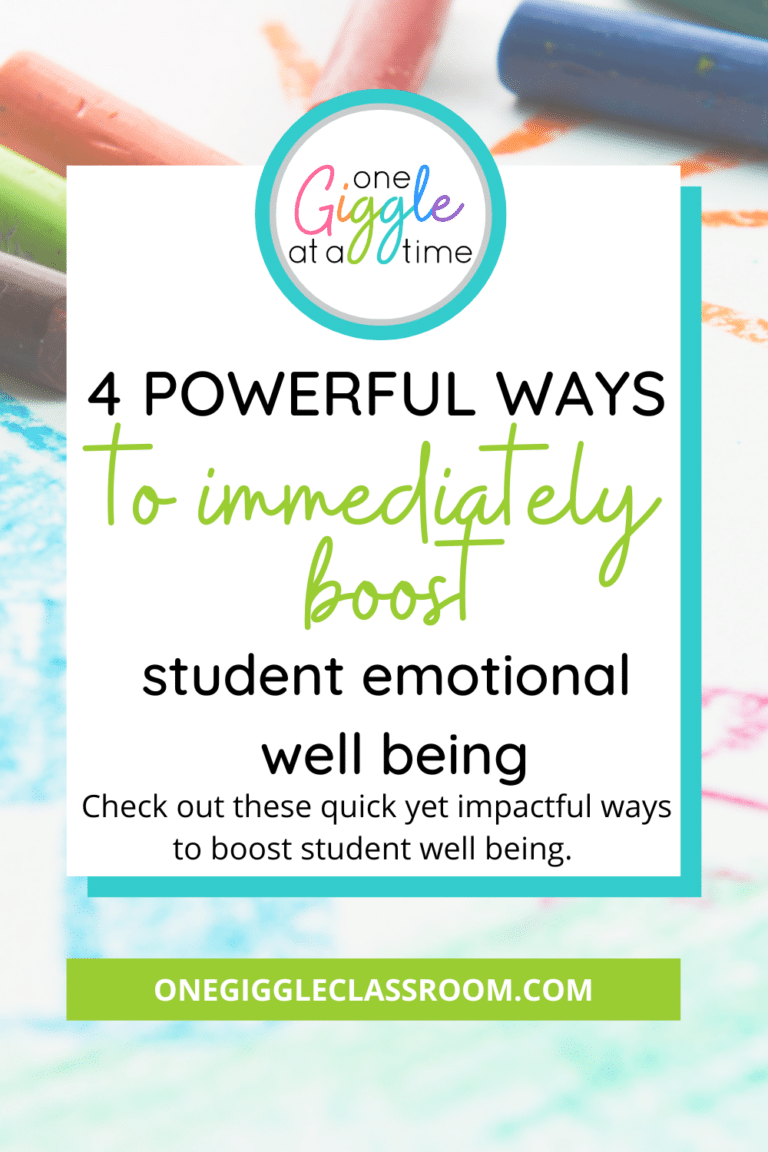
5 Reasons Why Daily Journal Writing Should be a Part of Every Elementary Classroom
Share This:

As an elementary teacher, you already know how important writing is, but honestly, it is likely of of the things that gets pushed aside in your busy classroom… Thankfully, making sure you add writing practice each day doesn’t have to be hard; it’s as easy as students journaling! Let’s review the amazing benefits of daily journal writing and how you can easily make this writing practice happen!
5 Reasons for Students to Journal Daily
- Enhance Writing Skills
- Encourage Self-Expression
- Increase Critical Thinking Skills
- Build Confidence & Self-Esteem
- Promote Emotional Well-Being
1. Enhance Writing Skills
Daily journal writing allows students to consistently practice and improve their writing skills in a structured way. As you offer regular feedback and students begin to reflect on their work, they can refine their spelling, grammar, vocabulary, and overall composition skills.
2. Encourage Self-Expression
The next benefit to daily journal writing is opportunities for students is self-expression!

The dedicated journal time allows students to express their thoughts, emotions, and experiences in a safe and personal space. They can discover so much about themselves as they write in response to your carefully selected writing prompts each day.
This reflection time leads to a deeper sense of identity and increased understanding of their own perspectives– yes, even for the youngest of students!
3. Increase Critical Thinking Skills
As they write each day, students are prompted to think critically about their experiences, analyze their feelings, and make connections between different ideas. This process nurtures increased cognitive skills and leads to a more thoughtful and analytical mindset.

(Crazy to think how just daily journal writing can lead to such important life skills, right?!)
4. Build Confidence and Self-Esteem
Your students will also be able to build confidence and self-esteem as they practice writing each day! As they see their thoughts come to life on paper, watch their handwriting skills improve, and see how they are creating longer responses, they will naturally experience feelings of pride.
You can boost their confidence too by pointing out these new achievements as you notice them.
This internal and external positive reinforcement contributes to a more positive attitude towards learning in general, and a love for learning is something to celebrate big time!
5. Promote Emotional Well-Being
Finally, writing in journals can be therapeutic for students. Depending on the type of journal prompt you’ve presented that day, students may be able to process different emotions like stress, anxiety, fear, and excitement in a safe and structured way.

The private nature of journal writing also allows students to feel no fear of potential judgment from others.
Students who learn to identify and manage their emotions are developing greater social-emotional learning skills!
While these 5 benefits of daily journaling are enough to get most on board, there are more reasons you should consider making this a part of your classroom routine:
Added Benefits of Journal Writing
- Builds a Positive Classroom Community
- Easy to Differentiate for All Skill Levels
Builds a Positive Classroom Community
Journal writing is a powerful tool for building a positive and supportive classroom community! By encouraging students to share their thoughts, feelings, and experiences, you work to create an environment that is fair and respectful for all.
A space where empathy, understanding, and a sense of belonging are experienced leads to a tight-knit community among your students!
Easy to Differentiate
Another huge benefit of daily journal writing is its flexibility! Using done-for-you differentiated journal writing prompts, you can tailor prompts to meet the individual needs of each of your students.
Differentiation ensures everyone is challenged appropriately and supported well in their writing journeys. When each student is working daily at their unique skill level, maintaining the routine of daily journal writing won’t feel nearly as difficult!
How to Begin Daily Journal Writing
Before you begin your journey of daily journal writing with your students, it’s important to set everyone (yourself included!) up for success.
- Easy Prep
- Utilize Daily Routines
Easy Prep
The first step is to prepare your students’ journals. Of course, you may choose to use spiral-bound notebooks or folders with prongs and lined pages, but you could also print these FREE journal writing covers and pages to make things a little more exciting for everyone!
This freebie also ensures that even schools with limited budgets can embrace the benefits of daily journal writing! Fill in the form below to grab these journal covers and writing pages for free.
Utilize Daily Routines
Next, utilize your already-amazing daily routines!
In the hustle and bustle of your elementary classroom, it can feel impossible to find time to add additional activities. Instead of adding stress to your plate, consider adding journal writing to Morning Meeting.
The Morning Meeting Activities and Journals Yearlong Set provides you with ready-to-use writing prompts like Question of the Day, Advice of the Day, Joke of the Day, and Fact of the Day.
Other great options for daily journal writing:
- Small groups
- Immediately before pack-up time for dismissal
Daily journal writing is a versatile and powerful tool that goes beyond the development of writing skills. It plays a crucial role in nurturing different parts of students’ personal and academic growth, helps build a more positive classroom community, and just makes learning more fun! Use the ready-to-use resources and FREE journal covers and pages to start this great learning experience this week– you can do it!
Let me know if you have any questions about anything you see here. Don’t forget to pin this post to refer to it later!

Other posts you may enjoy:
10 Tips For A Successful Morning Routine To Reduce Chaos In the Elementary Classroom
Most Important Classroom Routines and Procedures: What to Teach and How to Teach It
6 ENGAGING Activities to Build Strong Vocabulary in Elementary-Aged Students
MAKE COMPREHENSION INTERACTIVE AND FUN!
Retelling Bookmarks
This FREEBIE is going to change the way your students spend their “after reading” time!


Diane Romo
Thank you for being here! I love sharing ideas with other teachers! If you are looking to enhance your teaching and build a positive classroom community, you have come to the right place!




















